Published on August 29, 2012
An Englishwoman in her mid-40s and the daughter of a church vicar, Hilda Hewlett was married with two children when she attended her first aviation meet at Blackpool. The meet spanned a week of flying from Monday, October 18 to the following Monday, October 25, 1909. Sitting in the stands, Mrs. Hewlett watched with amazement how these new things called aeroplanes flew. The experience changed her life. Despite her age, she decided that she too had to fly — even if no other British woman had yet earned a flying certificate. For Mrs. Hewlett, three challenges were ahead — to master the art of piloting an aeroplane, to overcome the sexist views of her era, and to prove even to her own husband that women could indeed fly. These were pioneering times and what, many in her family asked, would a housewife need with the dangers of this new aeroplane craze.
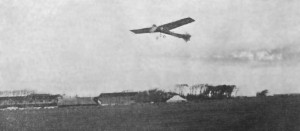
Over the course several days at the air show, Hilda Hewlett, then a 45 year old housewife, watched the flyers with awe. Her greatest inspiration of the week was the flight of Louis Paulhan. As well, she watched Hubert Latham in an Antoinette monoplane fly in high winds on Thursday, October 22. The winds that day were approximately 28 mph with gusts over 30 mph and all other pilots refused to fly. Latham’s Antoinette could barely fly at 30 mph and so, as he worked upwind, his ground speed was less than a slow walk. Sometimes, he flew backwards for a few feet before again slowing working his way ahead. Each movement of the control surfaces was visually amplified and more noticeable because of the slow forward ground speed.
It appeared to the crowd that he was struggling against the wind, the wings dipping left and right, the machine pitching up and down as it progressed. Then once he rounded the pylon, he flew quickly with the wind back down the field, only to turn again upwind as the machine slowed to a crawl relative to the ground. The second time around Latham flew a wider turn. He orbited around the entire field so widely that he even passed behind the spectator stands. Based on his accomplishment, the press exclaimed that in his flight Latham had proven that aeroplanes were no longer mere “toys”, but serious business. Seeing this, Hilda Hewlett made up her mind that it wasn’t just men who could fly — she would as well, even if in Britain there was not a single woman pilot in the country.

Hilda Learns to Fly
After Blackpool, the task of learning the art of piloting would take her nearly two years. Reportedly, her husband of more than 20 years didn’t understood her dream. He refused to support her or her love of aviation. In some accounts, he told her, “Women will never be as successful in aviation as men. They have not the right kind of nerve.” Yet even that statement is disputed by none other than Gail Hewlett, who wrote a fine book about her grandmother (in-law, since she married into the Hewlett family) and notes, that Hilda Hewlett had claimed that her husband was “broadminded about her flying”.
If indeed he was negative about her flying as some sources attest, she was destined to prove him wrong. She was 47 years old on August 29, 1911, when Hilda Hewlett tested at the Brooklands for her pilot’s certificate in her own biplane, having attended Gustave Blondeau’s flight school there. One of eight pilots who successfully tested that day (with some of the trials at concurrently Hendon in the good weather), she rose and wheeled around the sky in a Farman Biplane, demonstrating her abilities to take off, climb, turn, descend and land with the degree of precision and control expected.
The Royal Aero Club issued her Certificate No.122 after testing on her Farman, which she called, “Blue Bird”. She had become Britain’s first woman pilot. Some of the others who also certified that day included Swedish aviator Carl Olaf Dahlbeck, Lt. L.V. Stewart Blacker, Capt. Captain D Le Geyt Pitcher and Lt. Robert Hamilton Clark-Hall, R.N., who would later became Air Marshal Sir Robert Clark-Hall, RAF and then Air Commodore of the RNZAF during WWII.
While flying, for a time she called herself by a nickname, what was probably the first pilot call sign in history, though her call sign was well in advance of radio communications in the air. Her chosen name wasn’t something like “Iceman” or “Maverick” like in the movie “Top Gun”, but rather a more elegant and fitting moniker for a lady in her high 40s starting a new career in aviation — “Grace Bird”.
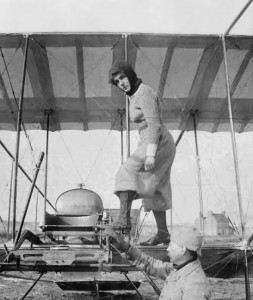
Now certified, she flew whenever she could, even if her husband still refused to agree to her endeavors. It seemed that their marriage was increasingly in trouble. Nonetheless, she forged ahead in her new career as an aviator. According to some accounts, less than three weeks after earning her pilot certificate, Hilda Hewlett performed in an air show at Chelson Meadow, Plymouth. Over time, as she regularly flew at the airfield, it would be others who would sit in the stands and watch in amazement as she flew — cheering not just at the miracle of aviation, but as well for Britain’s first woman pilot.
Flying became a major focus of her life and she taught her son, Francis E. Hewlett, how to fly. He earned Royal Aero Club certificate No.156 on November 14, 1911, just three months after his mother had certified. Less than a year after earning her pilot certificate, on April 6, 1912, she was publicly listed on the Competitor’s Register for the British Empire Michelin Cup No. 2, with a purse of 600 pounds sterling (that might not sound like much, but that’s the equivalent of $65,000 in today’s currency). The competition consisted of a circuit of 186 miles, which competitors could plot for themselves, pending approval from the Royal Aero Club. She was also listed by the Royal Aero Club as an entrant in the cross-country handicap at Brooklands on May 4, 1912, in which she was to fly her Farman.
On July 6, 1912, she presumably flew at Hendon for what was widely billed as “Ladies Day at Hendon” along with other entrants who were listed in the Royal Aero Club newsletter included Mrs. Cheridah de Beauvoir Stocks, Baroness Schenk, Mme. J. Merveu, Mlle. Marie Marvingt, Mrs. Winnie Buller, Mrs. Hilda Hewlett, and Mlle. Helene Dutrieu. Sadly, it is unclear whether she actually participated.
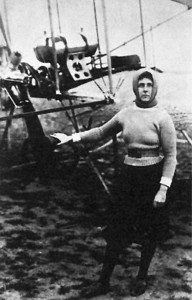
Major Changes
By 1914, the mother and son were considered quite experienced in the air. Yet that year would bring three major changes. Germany would invade France to begin the Great War and her son, Francis, would join the RNAS and commence a distinguished military flying career. Francis would be recorded as the only military pilot in British history to have been trained to fly by his mother.
He was Mentioned in Despatches for his participation in the Cuxhaven Raid that took place over the holidays in 1914 (he did not come back until a week later) — “On nearing the land the seaplanes met with thick weather, and were compelled to fly low, thus becoming exposed to a heavy fire at short range from ships and shore batteries. Several machines were hit but all remained in the air for over three hours and succeeded in obtaining valuable information regarding the disposition of the enemy’s ships and defences.”
Three years later, he was Mentioned in Despatches on May 12, 1917, “For conspicuously good work in command of the seaplane stations at Dover and Dunkirk.” Thereafter, he received the Distinguished Service Order. On May 8, 1918, he had a close call when he crashed a DH-4, yet he and the other aviator, Lt. B. H. Stata, walked away. Eventually, Francis Hewlett would rise to the rank of Group Captain.
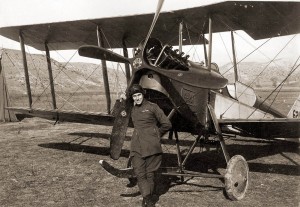
As for Hilda Hewlett, she had joined in a business partnership with the man whose flight school she had attended to learn to fly, Gustave Blondeau. Together, they set up an aircraft manufacturing company, Hewlett & Blondeau Ltd., into which Maurice Hewlett invested. Under license, they manufactured aircraft for private and military use. The business hit its high point during the war, supplying the RFC and RNAS. Among the types manufactured included the Armstrong Whitworth F.K.3 — of which 350 were built — and the AD Scout, the Avro 504, the Dyott Monoplane and even two Dyott Bombers. Early on, the company also manufactured a number of French designs such as Farmans, Caudrons and Hanriots.
In all, 820 aircraft were manufactured for the British military as well many of the 90 hp engines that they built that were considered “vital to the war effort” — at its peak, the company, in which Hewlett was the key manager, employed 700 people at its main factory called Omnia Works, at Leagrave, Bedfordshire. Mrs. Hewlett was the driving force of the company, working ceaselessly through the war, skipping even her own lunches and dinners to keep the factory well-managed. Always a unique figure, she was often seen driving between buildings in her large car, her favored Great Dane sitting in the back.
Becoming a Kiwi
After the end of the war, the company’s contracts dried up. They produced small 2.5 hp farm engines, such as for threshing, but found no market and only had orders for a handful. Of those, five survive to this day — one having turned up in 2011 in an estate, still operating finely on a workbench 92 years later, even in its original paint! By 1920, the two partners closed the doors and sold the land and factory buildings. Mrs. Hewlett took the opportunity afforded by the end of her aviation manufacturing business to move to New Zealand, seeking a better life in a new and distant land — mainly to get away from the congestion and crowds of Britain. Once in New Zealand, she spent the rest of her days enjoying the open country, camping and spending time outdoors. Naturally, she quickly established herself in the first ranks of that country’s aviation pioneers. After a long life involved in aviation and pursuing her dreams aloft, she passed away at the height of World War II in 1943.
NOTE: This story was updated and some corrections made for accuracy based on the input from Ms. Gail Hewlett, author of “Old Bird. The Irrepressible Mrs Hewlett”.
One More Bit of Aviation History
Hubert Latham, one of the men who inspired Hilda Hewlett to fly, was a wealthy Parisian and pioneer aviator. He was the first aviator to attempt a flight across the English Channel and, upon failing, assumed a different first achievement in aviation when he became the first pilot to successfully ditch a plane in the water! At Blackpool, for that inspiring flight 1909, Latham estimated that his ground speed exceeded 100 mph on the downwind leg. When flying upwind, at one point the wind gusted to approximately 40 mph and drove his plane backwards. Why did Latham fly in such dangerous conditions? Apparently, the night before his Blackpool flight, he had dined with the Tsar of Russia’s cousin and his wife. He had promised them that he would fly the following day. He made good on his promise — in truly spectacular fashion.
It wasn’t the only time that he flew in high winds, however. He had done so earlier at Reims, earning the nickname “The Storm King” from the press. Likewise, he did the same a year later in Los Angeles and suffered a serious crash, though he walked away from the wreck of his plane. The Los Angeles Times reported breathlessly, “Fights a Hurricane With Man-Made Bird. Aviator Latham Takes Desperate Chances, While Great Throng Holds Its Breath, and After Terrible Struggle Against the Wind His Machine is Crushed Upon Hillside – He’s Uninjured.” It seems that having cheated death, he was rewarded and encouraged to do so again and again. In every way, those were different times.
Putting the Blackpool Aviation Meet into Historical Context
A Week of Flying at Blackpool
To understand how air meets really were in this era, it is interesting to review the schedule of flights at the Blackpool Aviation Meet. The show was far from ambitious, though it didn’t matter to the assembled crowds. Whereas today’s airshows are chock full of events with flypasts and aerobatic shows following one another in quick succession, the eight days at Blackpool were a leisurely affair. The first day’s events started around 10:00 am when British pilot A. V. Roe took his own home-built machine onto the field. Its triplane design looked promising, but the small engine could not make it lift off. Two hours later at noontime, two Frenchman named Henri Farman and Louis Paulhan brought out Paulhan’s machine onto the field. The crowds watched intently and many hoped to see this one might actually fly. Farman didn’t disappoint them. After a short trial run straight ahead, he brought the plane back and flew a full circuit around the field. Paulhan then followed with another lap around the field before the two French aviators left for a long lunch. The crowds waited another three hours in the hope that others would fly as well.
Finally, at around 3:00 pm, Farman was back to post a time in the 3-lap speed trials, competing for a £400 prize. His best consecutive laps marked at approximately 37 mph. Meanwhile another Frenchman, Henri Rougier, alighted in his Voisin biplane, seeking to post an endurance flight record. As Farman motored around the course on his second and third laps, Rougier would climb above him and proceed to make nine laps around the course finishing long after Farman had landed. Rougier’s eyes were on the larger Blackpool Grand Prize of £2,000 for endurance in the air. Paulhan then took his plane back up to try to best Rougier’s endurance record, but only posted seven laps before he had to set down. Some time thereafter, Frenchman Alfred Leblanc, who was Louis Blériot’s assistant from that famous aviator’s English Channel crossing, also briefly rose in his own Blériot machine. Finally, to demonstrate the performance of their machine, Farman flew with Paulhan as a passenger — this would be the last flight of the day and the crowds departed for dinner.
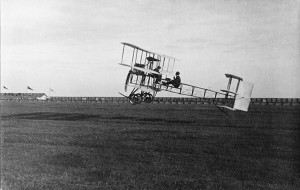
With long breaks between, this level of activity would bore most modern day airshow crowds. For the few thousand spectators at Blackpool, however, this was their first sight of an airplane and their first time ever seeing a man fly. The event was nothing short of sensational — a man could fly! Such things they had heard about or read in the newspapers, yet here — right in Blackpool — the machines had come and had flown. For the next seven days, the flights would take place intermittently. More than half of the days would be rained out or too windy to fly at all. On most days, only a few pilots flew. Day after day, crowds came, but with the weather, the numbers grew fewer and fewer. The best day was Wednesday, October 20. Farman managed 24 laps in his airplane — he would win the highest prize award as a result. After an hour and a half in the air, he only landed because he had signaled that he was hungry.
The rest of the week would be something of a let-down, with the exception of the famous flight by Latham in his Antoinette monoplane against the wind. That was how aviation was in the early 1910s — a rather uncertain affair, prone to risk and daring exploits. Aviation would finally truly come of age during World War I — mankind’s motivation to engage in a race to best one another in battle can be a powerful innovator, particularly in the field of aviation.
Today’s Aviation Trivia Question
Sadly, the brilliant pilot and pioneer aviator Hubert Latham died in 1911. What were the circumstances of his death?

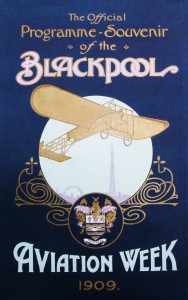
The circumstances are unknown. Officially a hunting accident in the French Congo, it is more likely that he was murdered by his porters. He was in the French Congo on “undisclosed matters of the Foreign Office.” This possibly included scouting locations for military airfields.
Spot on. Well done!